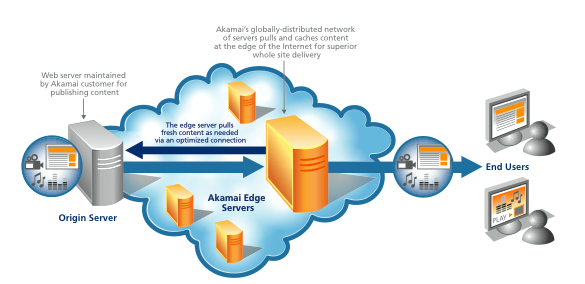16th January, 2013
4 Min read
Book a Demo
And what does it have to do with Content Delivery Networks (CDNs)? Quite everything. If you consider the nature of interactive web. It is the web of frequent changes. The web that engages readers constantly. Allows comments, streams video, audio tracks, animations and so on. The dynamic content of the World Wide Web 2.0 needs to get out there faster, and remain personalized. Personalized content as well as real-time info can not be cached. Moreover, the emergence of cloud layers such as SaaS (Software as a Service), and PaaS (Platform as a Service) and so on, require more efficient models of delivering online content. Besides caching.
This is why Content Delivery Networks (CDNs) include Dynamic Site Acceleration services. Akamai, Limelight, Cotendo, all the leading CDN providers in the industry, include their own tools to accelerate dynamic content. This allows vendors to deliver highly interactive content without investing in additional hardware buildout. Or software maintenance. Finally, for them, this will translate into a better user experience created, more interactions, more clicks, better conversion rates, higher overall visibility.
CDNs first removed to barriers to reach the end-user, posed by his geographical location. With surrogate servers allocated at different data centers, the content is delivered from the point closest to the user. No matter where he is in the world.
Reduce your AWS costs by over 50%
Discover your Cloud Saving Potential – Answer just 5 simple questions. AppsFlyer, Playtika, Lufthansa, IBM, top leading companies are already using our FinOps services.

The path chosen to retrieve the interactive content must not only be the fastest, but also most reliable. This leaves vendors with less troubles while worrying about both security (e.g. DDoS attacks, see the previous post) and their page load time. Both affect their sales revenue significantly.

Take a look at Akamai’s CDN infrastructure:
Source: www.akamai.com/dl/brochures/akamai_dsa_sb.pdf
At Akamai, they employ more than 100,000 surrogate servers within 71 different countries. While Akamai pays for hosting those servers, the vendors pay for delivering their content to end-users using this globally-distributed network of servers. But how does it all work?
Think of all this technologies when applied to mobile device users. Allegedly, their number (of smartphone users) has recently topped 1 billion. And they expect the same capacity and bandwidth to be experienced while browsing websites. This fastest growing segment of the Internet is likely to rely on the trend of speeding up development of dynamic content acceleration technologies. Its power to be truly revealed in the future decades.
Schedule a call with our experts. Discover new technology and get recommendations to improve your performance.
